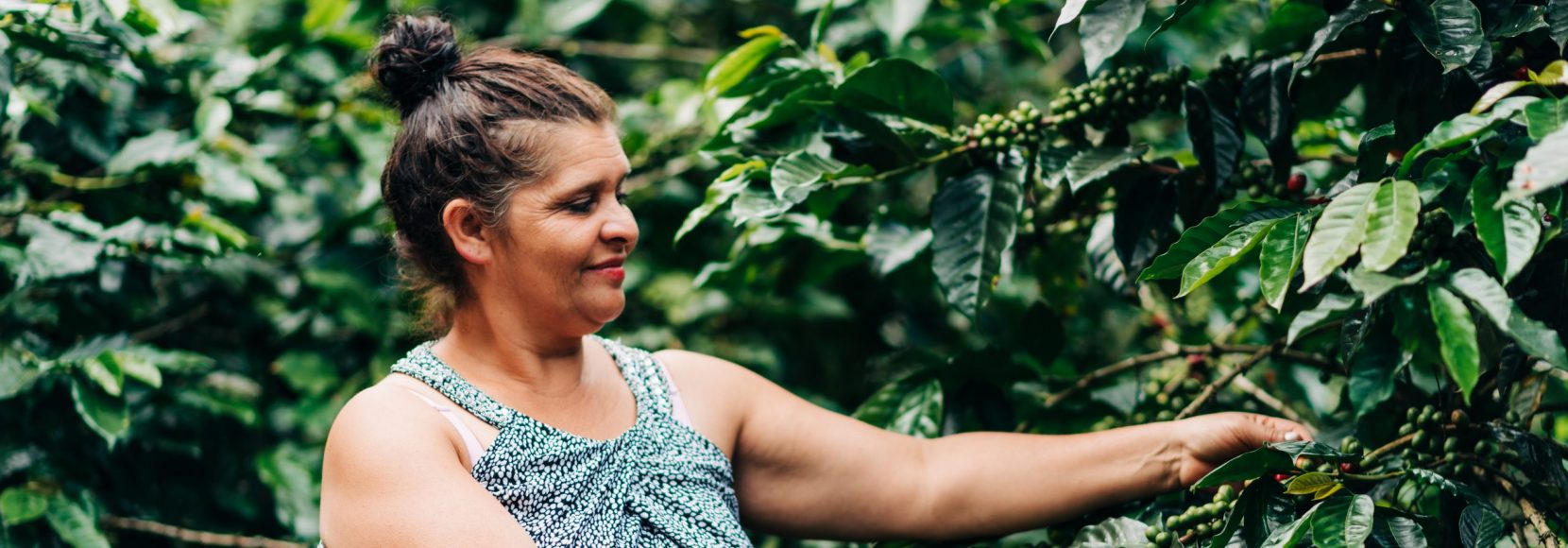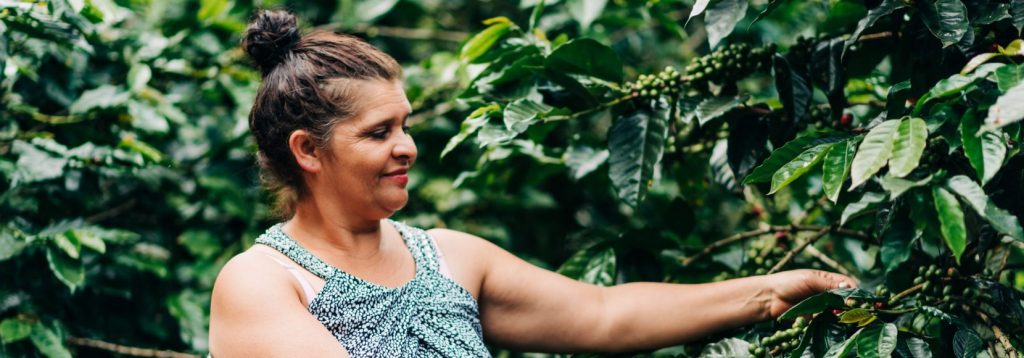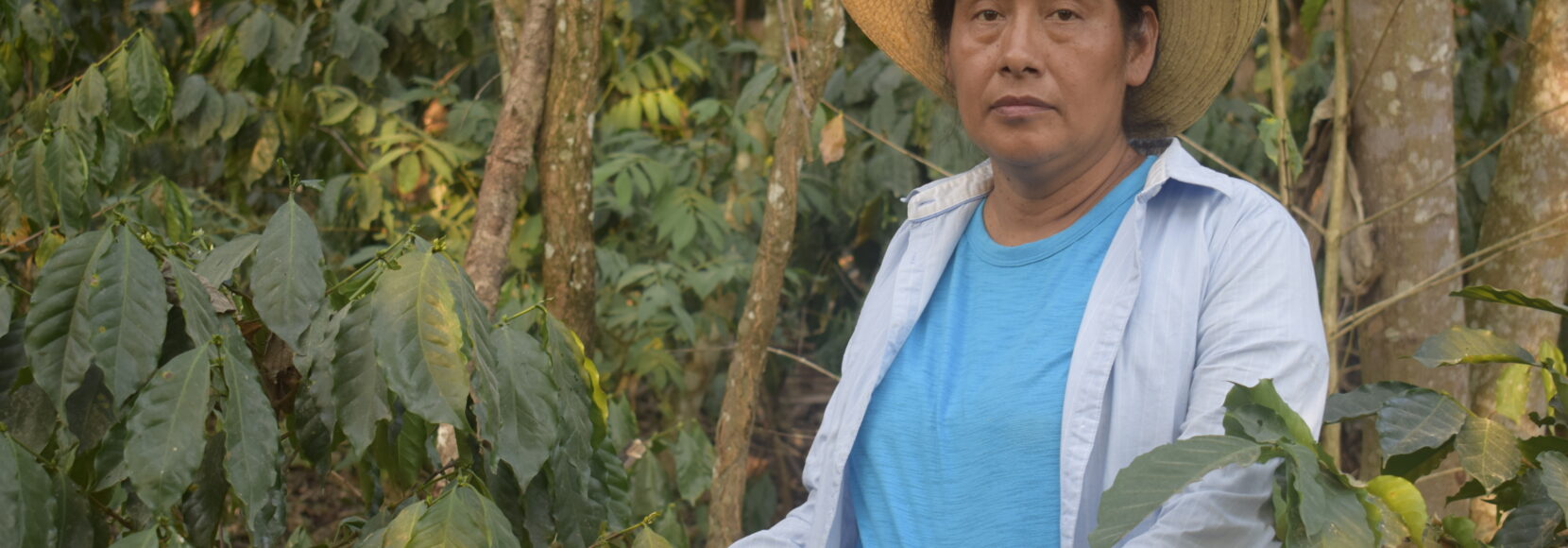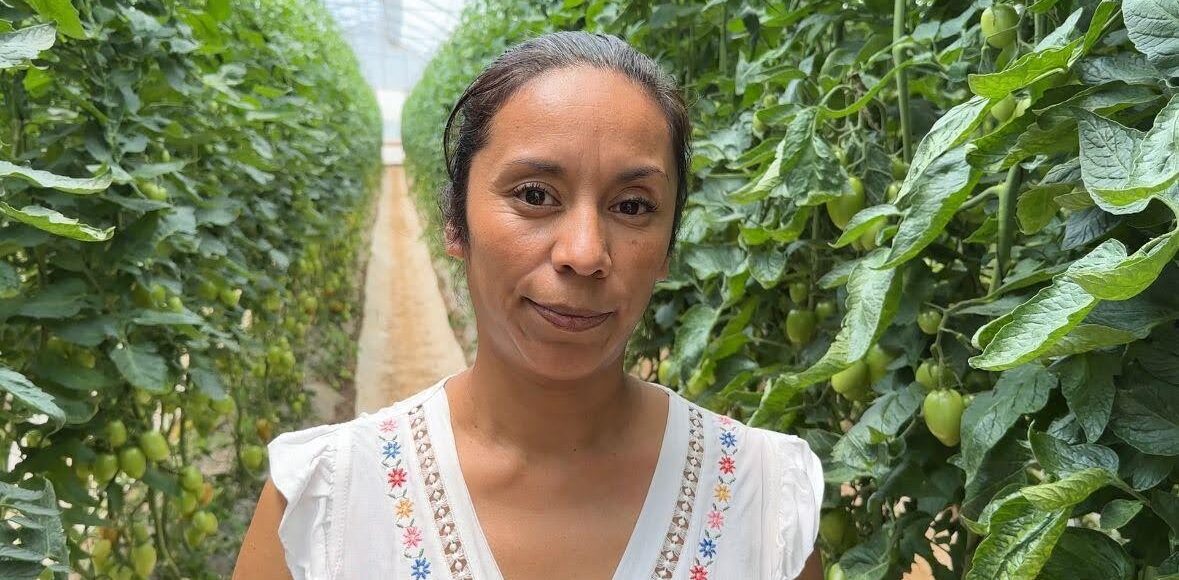
What is High-Margin Agriculture? Learn the Essentials From Matt Foerster, TechnoServe’s New Director of Agricultural Markets
Matt Foerster joined TechnoServe earlier this year as our new director of agricultural markets. With over 15 years of experience, Matt is overseeing TechnoServe’s large portfolio of work in commercial agriculture. Here we ask Matt about the most important issues in agriculture today – and its critical role in reducing poverty.
The Role of High-Margin Agriculture in Reducing Global Poverty

Matt Foerster recently joined TechnoServe to lead our work in high-margin agriculture (HMA) – so called because of the high potential profit margins of certain commercial crops, which can alleviate poverty for the farmers who grow them.
These farmers have struggled recently with COVID-19 disruptions and continue to battle challenges like the growing threat of climate change. TechnoServe’s work helps these farmers improve their economic and environmental resilience through sustainable, market-based solutions.
Q: What brought you to TechnoServe?
I first crossed paths with TechnoServe about a decade ago, when I was a Fellow working with the East Africa Coffee Initiative.
Since then, I’ve continued working in the food and agricultural sector across very different contexts: from large-scale commodity farming systems in the United States to small-scale production of specialty crops in developing countries.
I’ve come to believe that, while the frequency and severity may differ, many of the challenges faced by farmers today are universal – extreme weather conditions, incidences of crop diseases, limited access to finance, unpredictable markets, and more.
Nearly every developed nation began their economic growth by first investing in agriculture, and I believe that agriculture is among the most immediate and highest-impact channels through which to address both poverty and climate change at scale.
Matt Foerster, Director of Agricultural Markets, TechnoServe
However, there are effective solutions and breakthrough innovations happening on fields and farms across the world. With operations in 30 countries and over 50 years of an evidence-based and market-oriented approach, TechnoServe is playing a pivotal role in bringing these solutions to smallholder farmers.
I know of no other organization that takes such a strategic and thoughtful approach to realizing this opportunity as TechnoServe.
Q: What exactly is high-margin agriculture?
High-margin agriculture is how we describe one of our practice areas, and it includes a portfolio of projects that help farmers transition from subsistence farming to commercial agriculture. These are farmers producing crops like cocoa, cashew, avocado, mangos, tomatoes, and more for both domestic and export markets.
Just to be clear, high-margin agriculture doesn’t mean bigger, more industrialized farms. Rather, this means that instead of focusing on the volume of what’s produced on any given hectare of land and trying to optimize for increased yield at all costs, we seek to understand the value that can be created, starting from that hectare and then along the entire supply chain, in ways that benefit farmers, households, businesses, and rural communities.

Practically speaking, value can be created through several different ways. It could mean introducing higher-value crops, or by achieving a higher price for crops that are already being grown, or both. Value can also be created by pursuing opportunities for downstream processing, reducing post-harvest losses, and strengthening linkages between smallholder markets and reliable markets. TechnoServe’s work in horticulture and the cashew industry are strong examples of this.
And we need to take a holistic view of value creation to include both economic and environmental definitions. This might involve introducing diverse cropping rotations and adopting regenerative farming practices that increase soil health, which at the end of the day is a farmer’s most valuable asset.
Transitioning from subsistence farming to commercial agriculture also means farmers can become more resilient to climate change and other shocks, and that future generations can continue to earn reliable incomes from agriculture.
Read about reducing losses in the mango value chain.
Q: What are the biggest opportunities you’re seeing in terms of high-margin agriculture in developing countries?
A few come immediately to mind:
1. Helping farmers adapt to climate change through good agricultural practices
TechnoServe does this in many countries and through many types of programs. In Ethiopia, for example, coffee farmers are learning specific and contextual techniques to stump and rejuvenate their coffee trees.
In Nicaragua, which faces different climate-related challenges due to its geography and landscape, cacao farmers are learning how to increase their productivity and profitability through an entirely different approach.
2. Ensuring widespread adoption of contextual technologies in the sector
Today, agricultural technology is often thought of in its most advanced form with an ever-growing set of solutions from remote sensing and imagery to robotic harvesting. These technologies all play an increasing role in helping farmers become more efficient, productive, and profitable.
TechnoServe Labs regularly implements cutting-edge technological solutions that help farmers deliver better results than they could have on their own. And in Benin, TechnoServe is helping cashew producers use drones to adopt climate-smart practices.
But the hardware and software used by farmers in the United States — where the average farm size is 180 hectares — are not necessarily the best fit for smallholder farmers in sub-Saharan Africa, where the average farm size is just two hectares.
Technological innovation can also involve relatively simple, often overlooked improvements: improved seed spacing, composting, or drip irrigation; or supporting a farmer cooperative transition from pen-and-paper systems to basic accounting and inventory management software. In Nigeria, for example, a TechnoServe program is helping farmers keep tomatoes fresh for longer periods of time through simple refrigeration techniques.
3. Transforming and improving agricultural market systems
This really means building and strengthening market relationships, ensuring price transparency, and reducing volatility and uncertainty for smallholder farmers who are often the most vulnerable to global price shocks, conflict, and climate disasters.

As a result of COVID-19, TechnoServe has been helping smallholder farmers and entrepreneurs rebuild their supply chain environments and links. In Mozambique, for instance, the Catalisa program responded to canceled sales contracts and other disruptions by creating a simple virtual platform to link vegetable and poultry farmers with local businesses looking for new suppliers.
Q: How does climate change impact the farmers in TechnoServe’s high-margin agriculture programs?
While there are a number of challenges that smallholders farmers face, climate change is one that may come with irreversible long-term consequences. And it’s often at the core of other issues that farmers face.
1. Smallholder farmers are some of the most vulnerable populations globally
Around the world, smallholder farmers produce nearly 35% of all food consumed globally – using just 12% of available agricultural land. Climate change puts all these farmers at risk in new and increasingly dangerous ways – especially if we don’t act quickly to reduce its effects.
2. Agricultural activities contribute to climate change
The agriculture sector is a part of the problem, primarily through the use of synthetic fertilizers and land use changes. Our work needs to help address these issues in a way that makes good business sense for farmers, while also reducing climate impacts.
3. Agriculture is increasingly seen as part of the solution
Agriculture also provides an exciting opportunity to have an impact on the future of climate resilience efforts. The adoption of regenerative farming practices – like reduced tillage, crop rotation, the use of cover crops and reduced application of synthetic fertilizers – can be a solution to both reducing emissions (i.e., stopping the problem from getting worse) and sequestering carbon already in the atmosphere (i.e., reversing or drawing down carbon).
How is climate change impacting the future of coffee? Learn from farmers around the world.
But high-margin agriculture also provides an exciting opportunity for our work to have an impact on the future of climate resilience efforts and can be a solution to reducing emissions and reversing climate change.
And, in response to these challenges, TechnoServe has built climate resilience into the core of our high-margin agriculture work: We do analyzes on economic and environmental best practices, train and educate farmers, and use technology to reduce the impact of climate change.
Q: What are your first priorities in the new role?
I’ve spent the first few months at TechnoServe confirming what I suspected: TechnoServe has a lot of expertise and knowledge in every office and every program. I’m excited to work with these teams to learn about what’s working and what’s not, and then deploying our tools, approaches, and training programs so they can more effectively scale around the world. I’m also excited to continue growing our footprint of agriculture projects, working in collaboration with agribusinesses, government agencies, and civil society partners.





